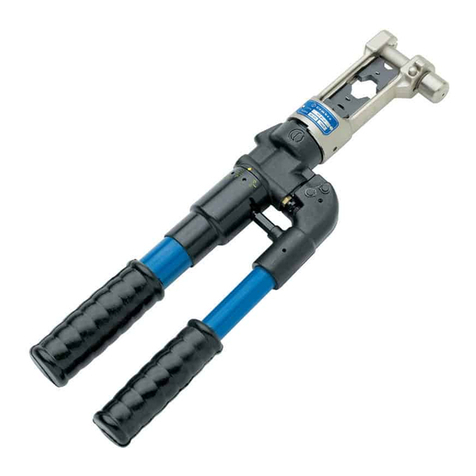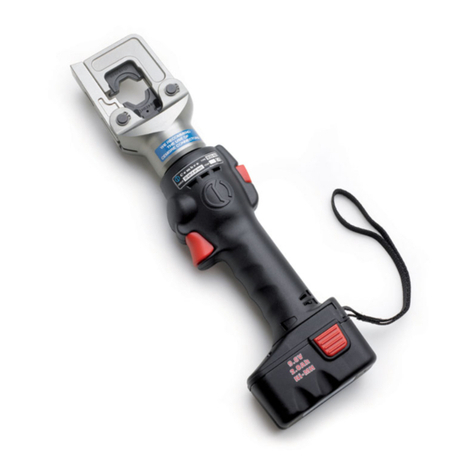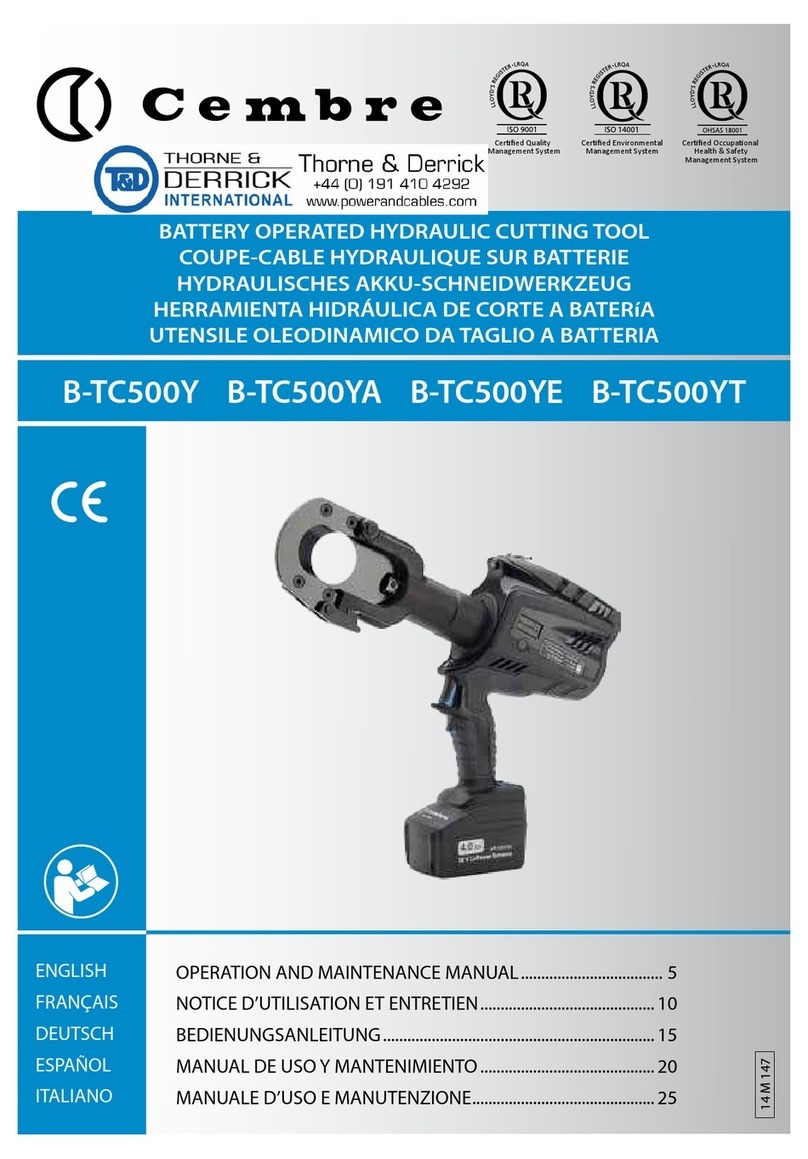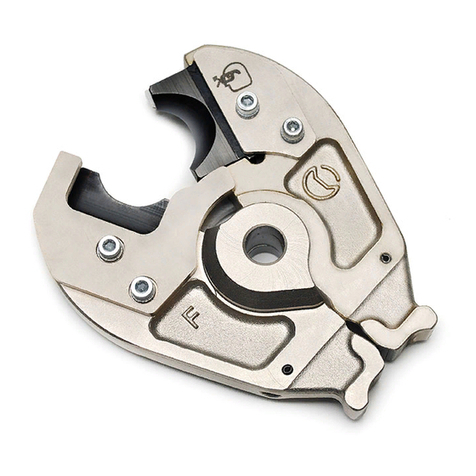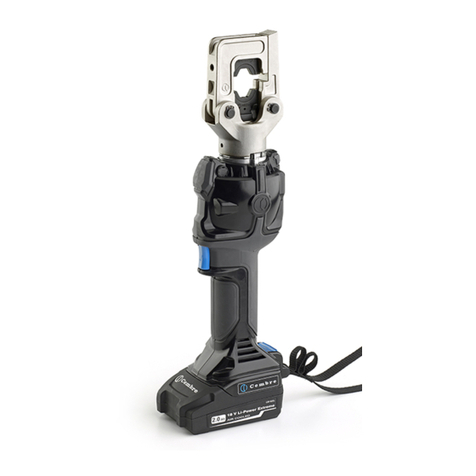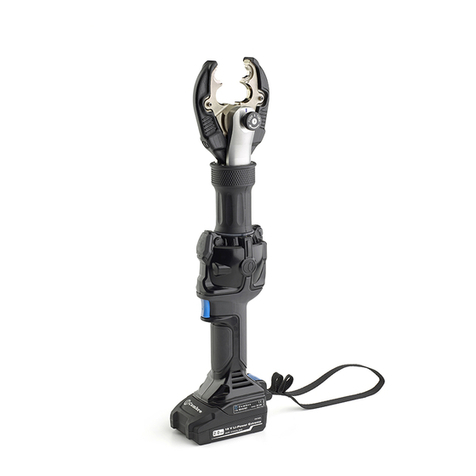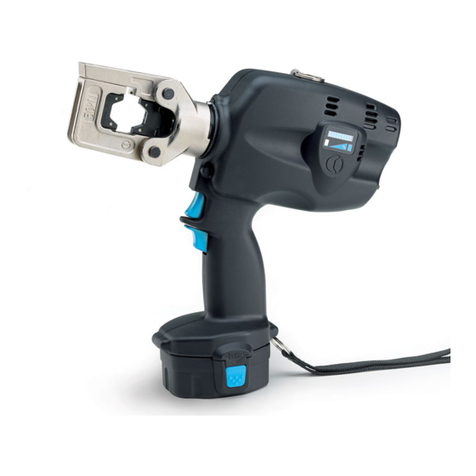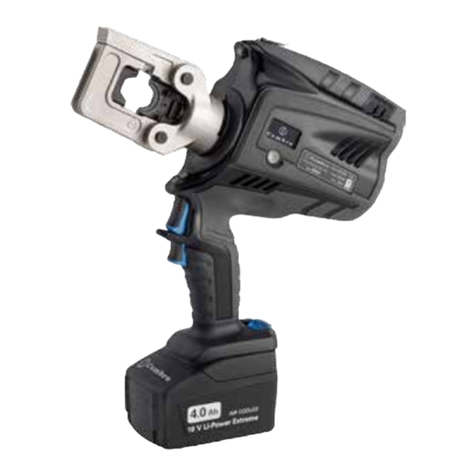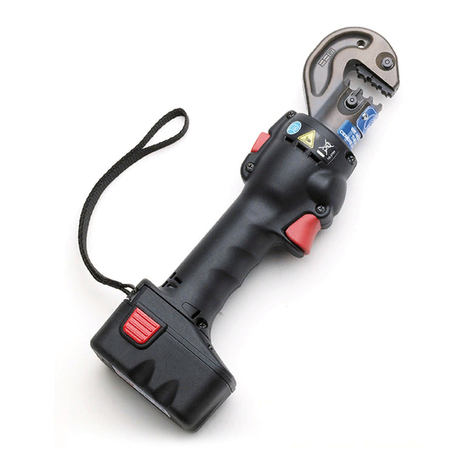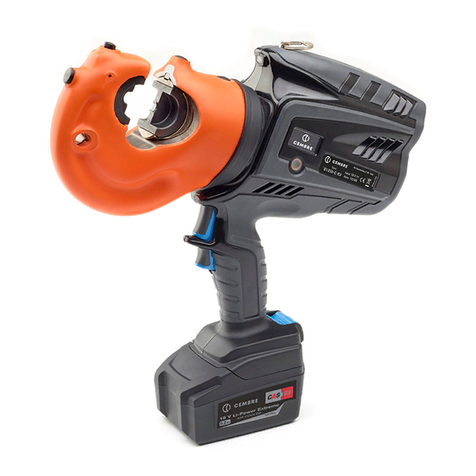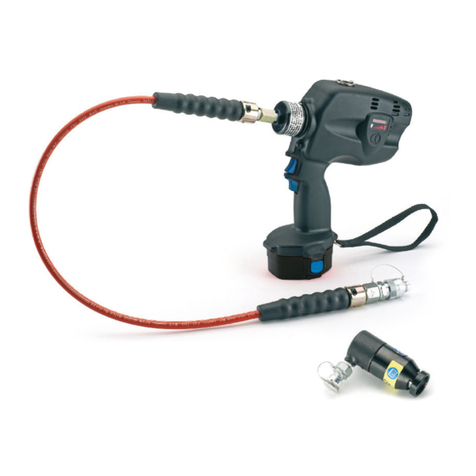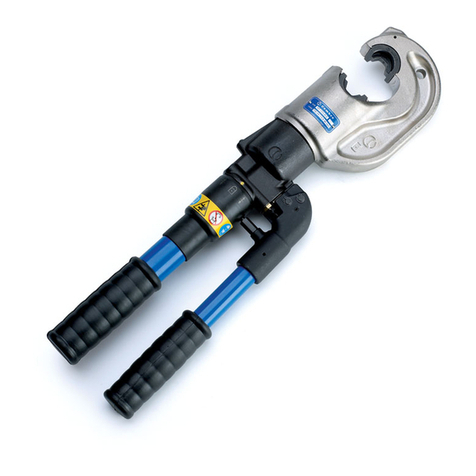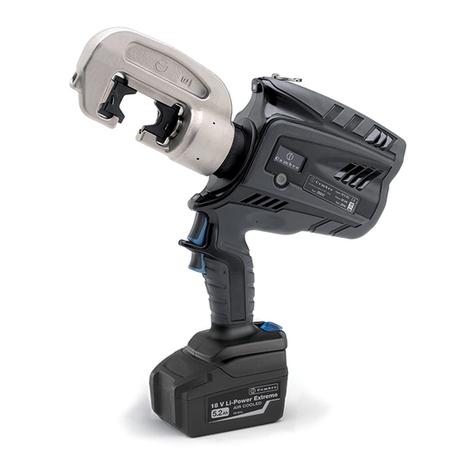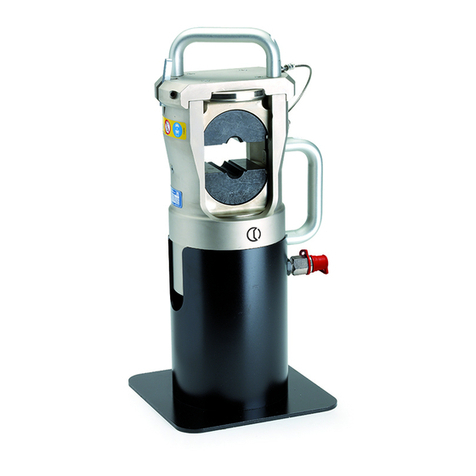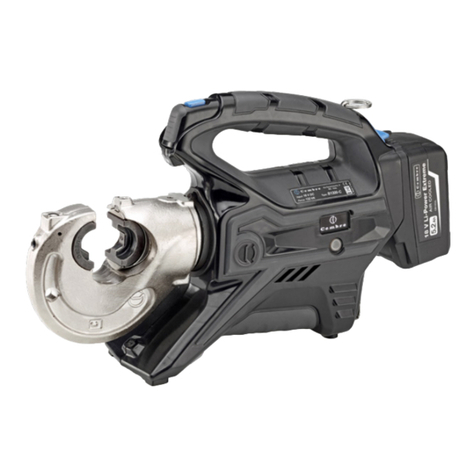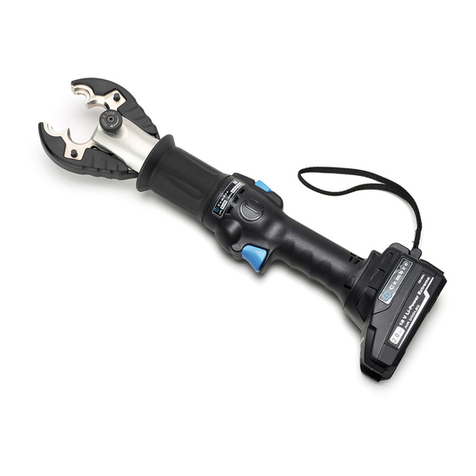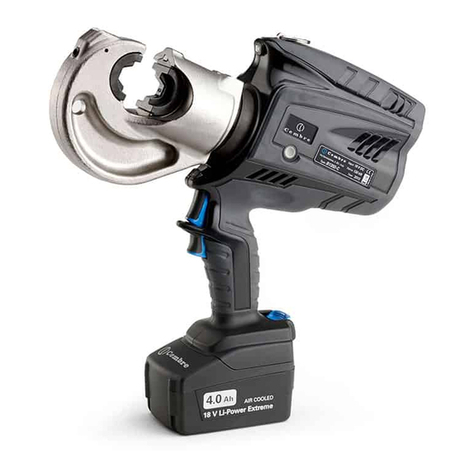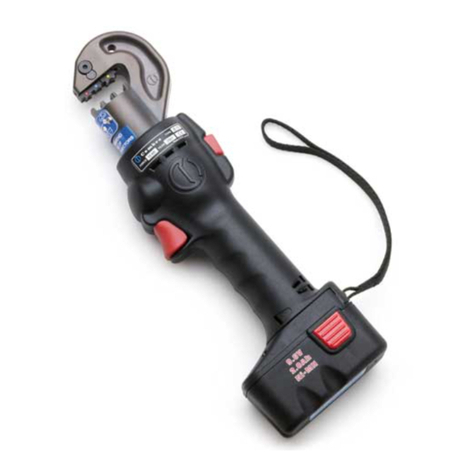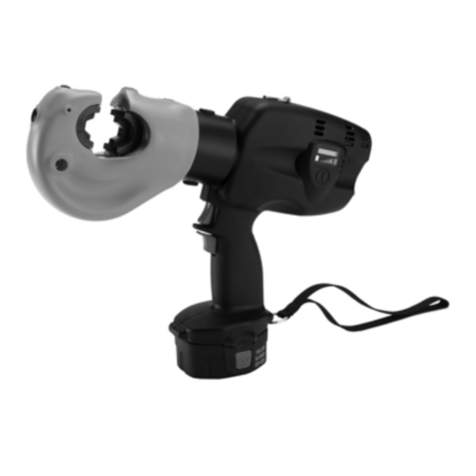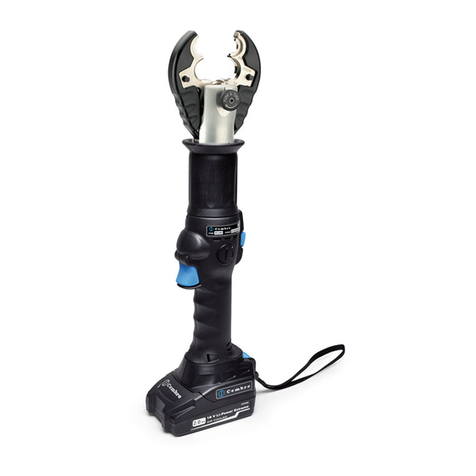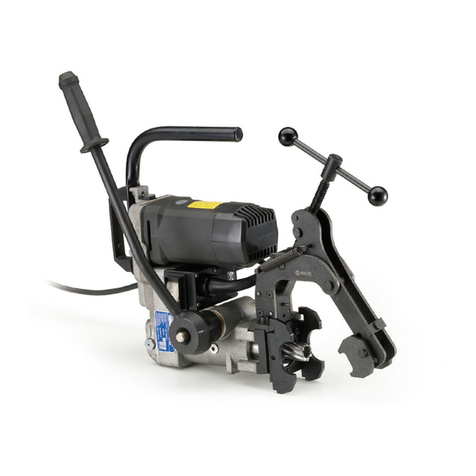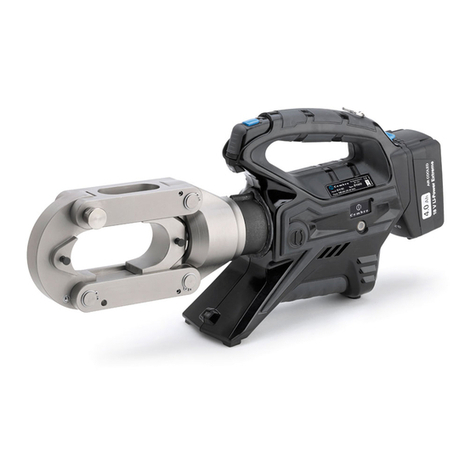
WARNING LABELS - ETIQUETTES SIGNALETIQUES - WARNSCHILDER -
ETIQUETAS DE ATENCION - ETICHETTE D'AVVERTENZA
–
Before using the tool, carefully read the instructions in this manual.
– Avant d'utiliser cet outil, lire attentivement les instructions de cette notice.
– Vor Inbetriebnahme unbedingt die Bedienungsanleitung durchlesen.
– Antes de utilizar la herramienta, leer atentamente las instrucciones contenidas en este manual.
– Prima di utilizzare l'utensile, leggere attentamente le istruzioni contenute in questo manuale.
–
Do not short the batteries.
– Ne jamais court-circuiter les bornes d'une batterie.
– Schliessen Sie die Kontakte nicht kurz. Brandgefahr!
– No poner en cortocircuito las baterías.
– Mai mettere in corto circuito le batterie.
–
Always recycle the batteries.
– Recycler toujours les batteries.
– Verbrauchte Akkus stets dem Recycling zuführen.
– Reutilizar siempre las baterias.
– Riciclate sempre le batterie.
–
Do not discard batteries into domestic refuse or waste disposal.
– Ne pas jeter de batteries dans une poubelle ou autre lieu non prévu à cet effet.
– Verbrauchte Akkus nicht in den Hausmüll werfen.
– No tirar las baterías al cubo de basura o lugar parecido.
– Non buttate le batterie fuori uso nei cestini della spazzatura o luoghi simili.
146
See page 45
Voir page 45
Siehe Seite 45
Vease página 45
Vedere pag. 45
Deutsch
----------------------------------------------------------------------------------
INFORMATION FÜR DEN BENUTZER gemäß der “Richtlinien 2002/95/EG und 2002/96/EG
in Bezug auf den reduzierten Gebrauch von gefährlichen Substanzen in elektrischen und
elektronischen Geräten, sowie auf die Abfallentsorgung”.
Das durchkreuzte Zeichen auf dem Mülleimer, welches auf dem Gerät oder seiner Verpackung
angebracht ist, zeigt an, dass das Produkt am Ende seiner Lebenszeit getrennt von den anderen
Abfällen entsorgtwerdenmuss.DiegetrennteAbfallsammlungdesvorliegendenzu entsorgenden
Geräts wird vom Hersteller organisiert und verwaltet. Der Besitzer, der sich des Geräts entledigen
will, muss sich daher mit dem Hersteller in Verbindung setzen und das von ihm angenommene
System für die getrennte Sammlung des zu entsorgenden Geräts befolgen.
Eine angemessene getrennte Sammlung, damit das Gerät für das Recycling, die Behandlung
und die umweltfreundliche Entsorgung vorbereitet werden kann, trägt dazu bei, mögliche negative
Auswirkungen auf die Umwelt und auf den Gesundheitszustand zu vermeiden und begünstigt
die Wiederverwertung und das Recycling der Materialien des Geräts. Bei widerrechtlicher
Entsorgung des Produkts durch den Benutzer werden die vom Gesetz vorgesehen
Verwaltungssanktionen angewandt.
Español
----------------------------------------------------------------------------------
I
NFORME PARALOS USUARIOS en los términos de las Directivas 2002/95/CE y 2002/96/CE
,
relativas a la reducción en el empleo de sustancias peligrosas en los equipos eléctricos y
electrónicos, además de la eliminación de los desechos”.
El símbolo del contenedor de basura cruzado por un aspa que aparece en el equipo o sobre
su embalaje indica que, al final de su ciclo de vida útil, el producto debe ser eliminado
independientemente de otros desechos.
La recogida selectiva del presente equipo, llegado al final de su ciclo de vida, es organizada y
manejada por el fabricante. El usuario que desee deshacerse del presente equipo deberá, por
lo tanto, contactar con el fabricante y seguir el sistema adoptado por el mismo para permitir
la recogida por separado del equipo que ha concluido su ciclo de vida. La adecuada recogida
selectiva, para el sucesivo envío del equipo dado de baja al reciclaje, al tratamiento y al
saneamiento ambiental compatible, contribuye a evitar posibles efectos negativos sobre el
medio ambiente y sobre la salud favoreciendo el reempleo y el reciclaje de los materiales que
componen el equipo. La eliminación abusiva del equipo por parte del propietario implica la
aplicación de las sanciones administrativas prevista por la legislación vigente.
Italiano
-----------------------------------------------------------------------------------
INFORMAZIONE AGLI UTENTI ai sensi dell’art. 13 del Decreto Legislativo 25 Luglio 2005, n.
151
“Attuazione delle Direttive 2002/95/CE e 2002/96/CE, relative alla riduzione dell’uso
di sostanze pericolose nelle apparecchiature elettriche ed elettroniche, nonché allo
smaltimento dei rifiuti”.
Il simbolo del cassonetto barrato riportato sull’apparecchiatura o sulla sua confezione indica che
il prodotto, alla fine della sua vita utile, deve essere raccolto separatamente dagli altri rifiuti.
La raccolta differenziata della presente apparecchiatura giunta a fine vita è organizzata e gestita
dal produttore. L’utente che vorrà disfarsi della presente apparecchiatura dovrà quindi contattare
il produttore e seguire il sistema che questo ha adottato per consentire la raccolta separata
dell’apparecchiatura giunta a fine vita.
L’adeguata raccolta differenziata per l’avvio successivo dell’apparecchiatura dismessa al riciclaggio,
al trattamento ed allo smaltimento ambientalmente compatibile contribuisce ad evitare possibili
effetti negativi sull’ambiente e sulla salute e favorisce il reimpiego e/ il riciclo dei materiali di cui
è composta l’apparecchiatura.
Lo smaltimento abusivo del prodotto da parte del detentore comporta l’applicazione delle san-
zioni amministrative di cui all’articolo 50 e seguenti del D.Lg. n. 22/1997.
–
When operating the tool, keep hands away from the danger zone.
– Au cours du sertissage, tenir les mains éloignées de la zone de travail.
– Während des Verpressens nicht mit den Händen in den Pressbereich gelangen.
– Durante su utilización, mantenga las manos fuera de la zona de peligro.
– Durante l'utilizzo, mantenere le mani fuori dalla zona di pericolo.
–
Do not operate when dies are not in place.
– Insérer les matrices avant d'actionner l'outil.
– Nicht ohne Presseinsatzpaar betätigen.
– No poner en presión sin matrices.
– Non mandare in pressione l'utensile senza le matrici inserite.
Li-Ion
Li-Ion
